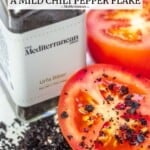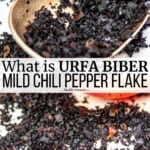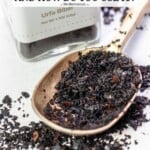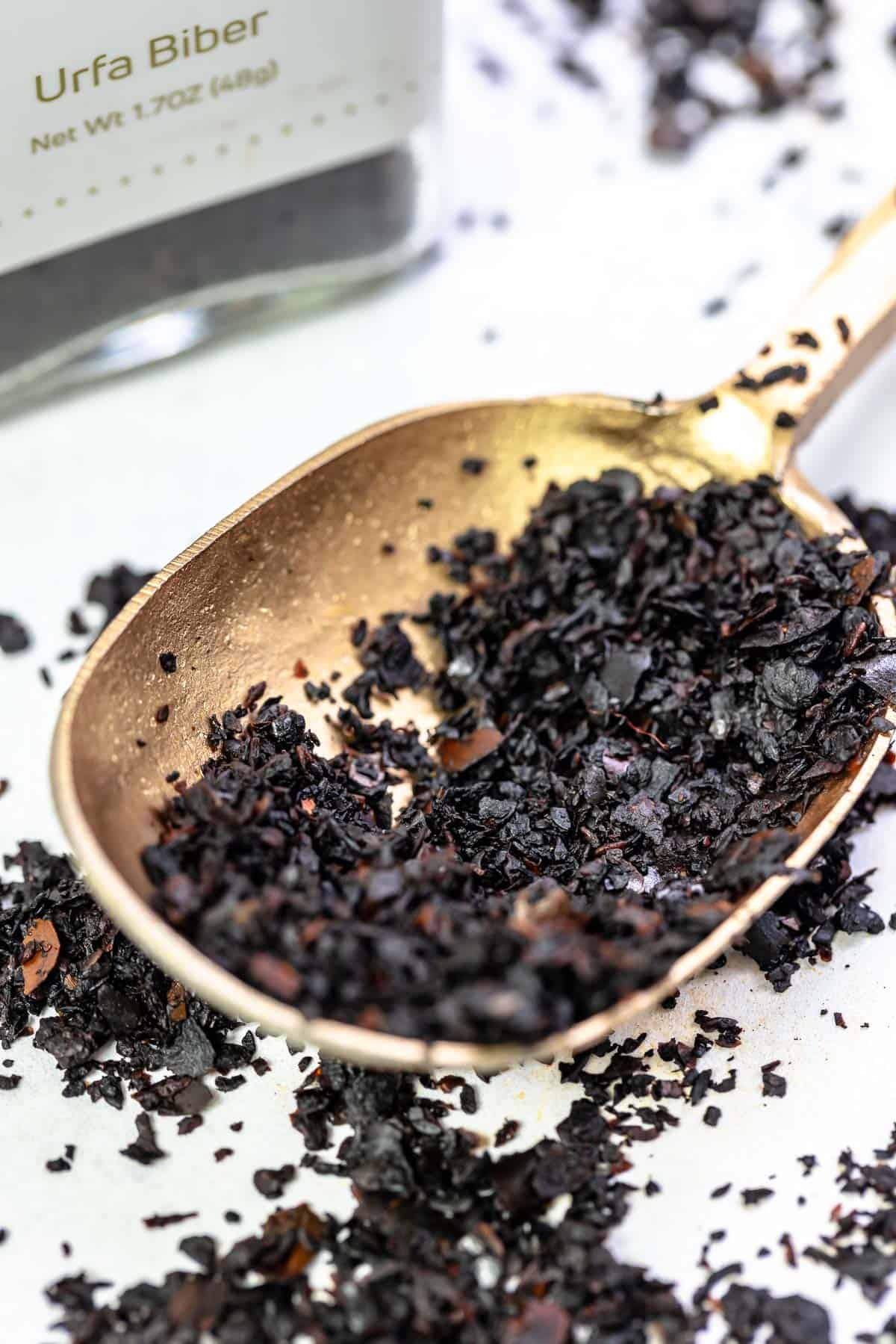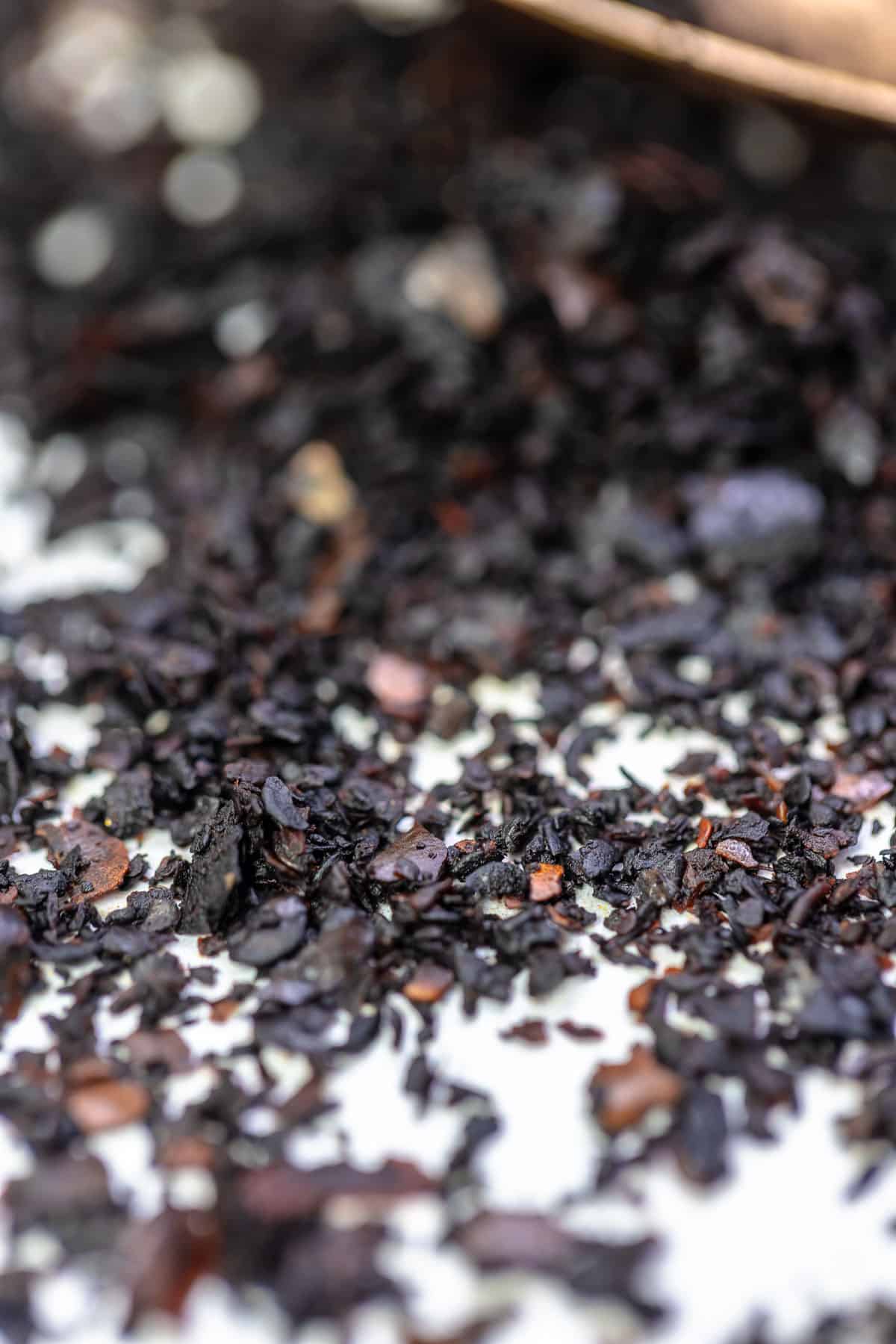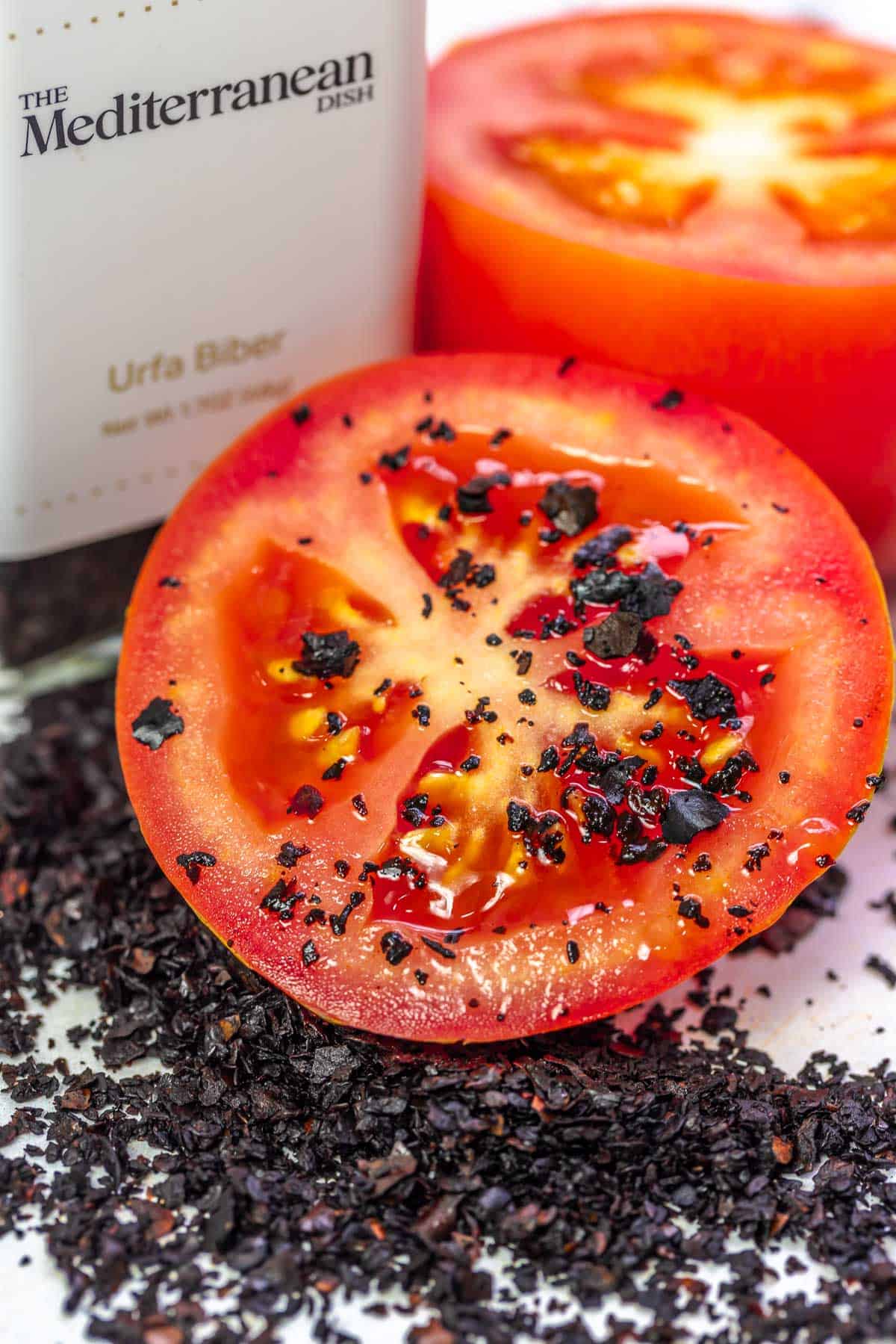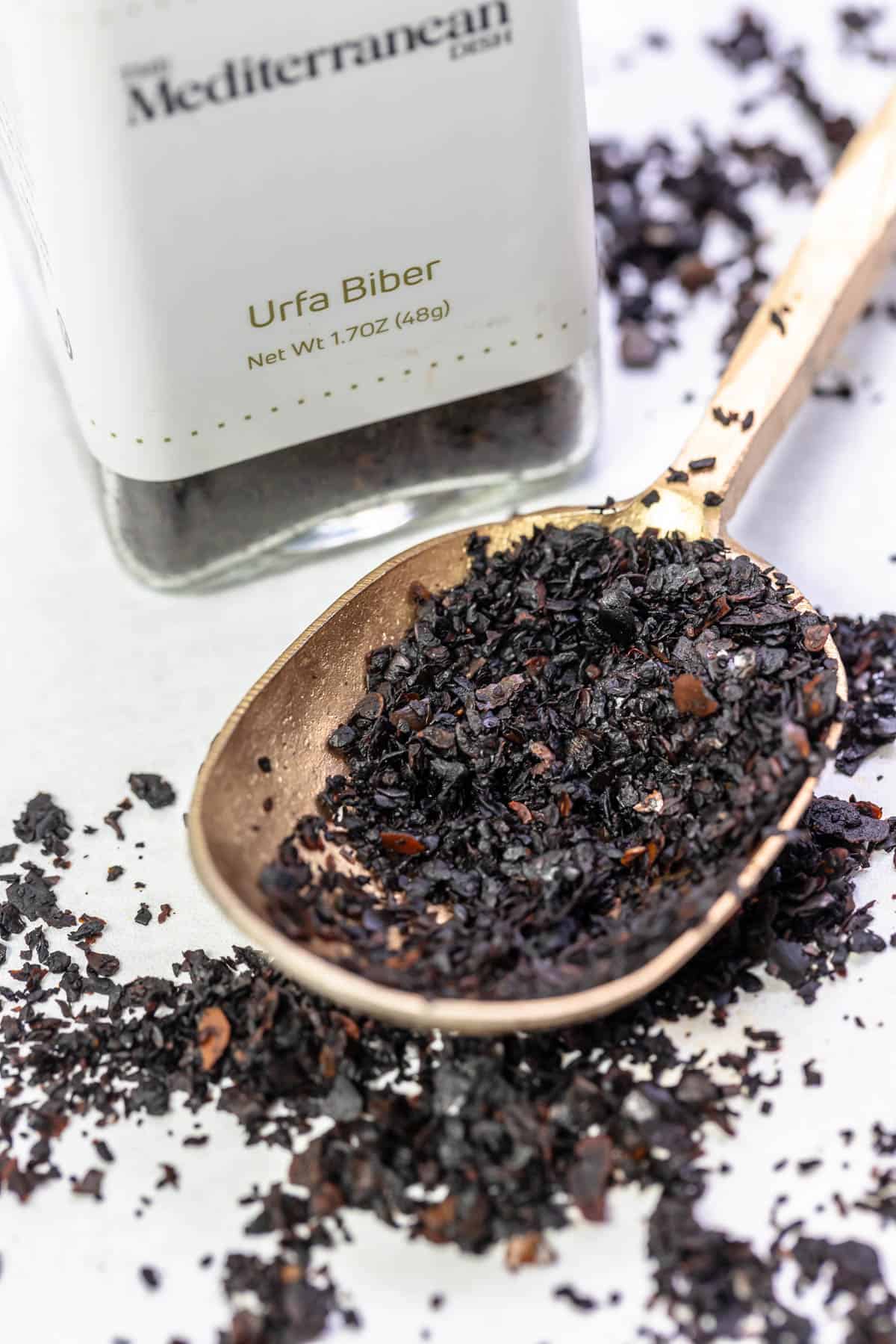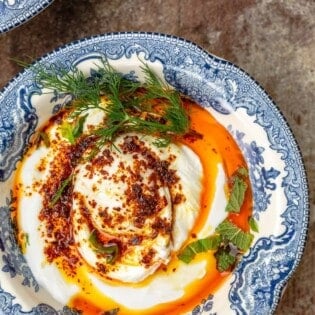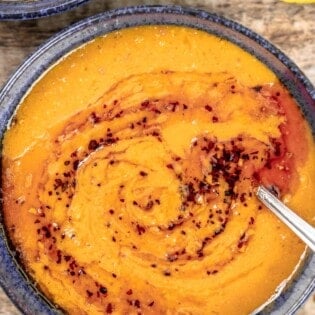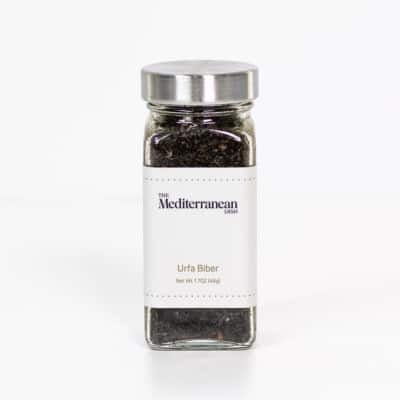Food Stories: Urfa Pepper at First Taste
I traveled to visit my husband’s family in Turkey about a year into our relationship. His father played tour guide, driving us from his citrus farm in Adana, Turkey, south to Gaziantep and Antakya, two ancient cities about 30 miles from the Syrian border. I learned to eat baklava upside down so the most syrupy, buttery portion hits your palate first. I tried a rich, fatty lamb stew called Beyran for breakfast (my husband, ironically, tapped out at that point). And, I walked the tiny aisles of the Turkish spice markets. At the bazaars, Antep pistachios, dried fruits, and spices spanning the colors of the rainbow make tiny mountains in large wooden barrels. Alongside, vendors sell copper pots next to antique chessboards and handmade guitars, with dried peppers and vegetables dancing in the wind above their heads. It was there that I first sampled Urfa biber, Turkish for “Urfa pepper.” I had heard of Aleppo pepper—the spice had been popping up as simply “Aleppo” on trendy restaurant menus for years. But Urfa biber was different. A bit more oily with a deeper maroon color, it looked like finely ground dark roast coffee. As I nibbled on a pinch, I began to understand how much variety there is in the word of dried chili peppers. Urfa biber tastes tannic with a sweet sun-dried flavor, a hint of smoke, and a mild lingering spice. I was no longer limited to basic chili flakes! Urfa biber has since become a staple of my spice drawer. Give this lesser-known Mediterranean spice a try. You may, like me, find yourself sprinkling the dried chili pepper on scrambled eggs, lentil soup, and even take out pizza.
How is Urfa Biber Made?
To make Urfa biber, farmers harvest deep red peppers from Şanlıurfa, a city in southeastern Turkey (“Urfa” for short). The peppers are sun-dried during the day, then tightly wrapped at night to “sweat.” The concentrated pepper is dried once more before it is ground and packaged. This sun curing gives Urfa pepper its sweet, almost caramelized and wine-like flavor and lightly smoky quality. Wrapping the peppers overnight enhances their flavor and accounts for the spice’s oily appearance.
How to Use Urfa Biber
Use Urfa biber just as you’d use any chili flakes, from dried red chili peppers to Aleppo pepper to even black peppercorn. I’ve sprinkled Urfa biber on my morning Çılbır (Turkish Poached Eggs) and Mantı (a Turkish dumpling with garlicky yogurt). I’ve use it to give a final pop of color to my homemade dips, from hummus to baba ganoush. I’ve mixed it with equal parts sumac and salt, sprinkled the blend on grilled watermelon, and used it to rim the glass of my margarita—like Turkish Tajín! You can also use Urfa biber like black pepper. Draw out the earthy flavors of a summer tomato with a sprinkle of Urfa biber and flaky salt. Upgrade your takeout pizza. Add a hint of smokiness to your salad dressings, and sprinkle is on this Smashed Cucumber Salad. Treat it like black peppercorn and the list goes on and on!
How to Store Spices
Store spices, including Urfa biber, sealed in a cool, dry, dark environment, like your pantry or spice drawer. Like fresh herbs, spices get duller over time. Replenish your spice drawer often—I happen to know of the perfect place!
Best Substitutes for Urfa Biber
Aleppo pepper, with its slightly fruity flavor profile and mild spice level, is a solid substitute for Urfa biber. Red chili flakes will have a stronger kick and less complex flavor, but they’d work too. And, of course, black peppercorn will do the trick in a pinch (so to speak). Browse all Mediterranean recipes.
Çılbır: Turkish Poached Eggs
Pide (Turkish Flatbread) with Feta, Spinach and Mushrooms
Easy Lahmacun Recipe
Turkish Red Lentil Soup (Kırmızı Mercimek Çorbası)
Smoky with a deep wine-like flavor and a subtle kick. Stock up on this unique Turkish spice at our shop. Visit Our Shop.
